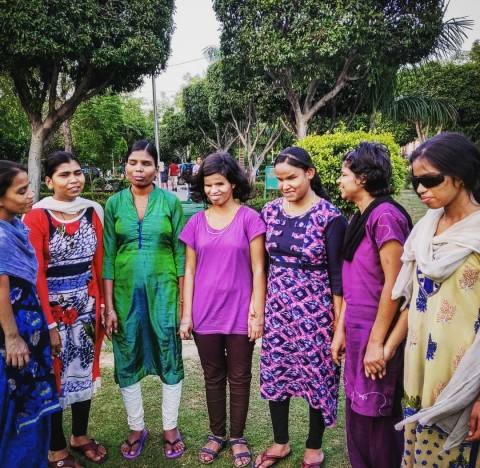What is blindness?
Blindness is a state of where person losses the ability to distinguish between light and dark. Blindness is quite a broad term. It includes many types of vision impairment. Range from a mild functional disorder like blurred vision to a more severe cases of total sight loss.
What is functional blindness?
Blindness is not complete blackness, even in the case of complete blindness. There is a term called as 'Functional blindness'. A person is considered functionally blind, when he or she uses alternative methods, to do his task that can be ordinarily performed done with sight, that it affects his/her daily life pattern.
People blind from birth have obviously not seen the world. So, they don't know how it actually looks. To people who are born blind, blindness seems normal, until they interact with sighted people. Such individuals are given special schooling so as to make them familiar with day-to-day activities.
People who lost their sight!
People who had normal vision but have now lost light perception, have a comparatively difficult living. They have done their tasks as a normal vision person, post the visual impairment, it's a challenge to cope up with the knowledge of space, sense of touch and enhance hearing. It is like being trapped in a dark cave. They might have visual hallucinations like sparks of bright light, at irregular intervals, called CBS or Charles Bonnet Syndrome.
What is 20/20 vision?
Remember seeing those charts at your eye doctor's clinic, displaying letters progressively increasing in size? That's a Snellen's chart. If you comfortably see the same line from 20 feet that a person with normal vision can see from 20 feet, you have a 20/20 vision. This number is called VA or visual acuity.
But if you get a 20/40, then it means that what a normal person can see from 40 feet, you can see the same line from 20 feet. So you need to be closer to the object to have a clear vision.
In U.S. a person with 20/200 vision is considered functionally blind. Means he/she needs to be at 20 feet to see what a normal person can see from 200 feet.
In India, we use meter for length conversions so a 6/6 to 6/18 vision is normal. If the subject can see the same line in Snellen chart, from 6 meters as a person with normal vision from the same distance, subject has a 6/6 vision.
In India, a person with a VA < 6/60 is legally blind.
Types of Blindness
As per the National Health Portal, we have following types of blindness.
Economic Blindness
Defined as, 'Inability of a person to count fingers from a distance of 6 meters or 20 feet.' Such individuals are unable to do any kind or work, industrial or otherwise.
Definitions of these impairments vary from country to country.
Social Blindness
Social blindness is a visual disability that adversely affects an individual's social life and causes impediments in education, personality, and development.
Technically, a vision of 3/60 or diminution of field of vision to 10° is characterized as social blindness.
Manifest blindness
The term "Manifest Blindness" defines a vision of 1/60 to just perception of light.
Absolute blindness
No perception of light
Curable blindness
That stage of blindness where the damage is reversible by prompt management e.g. cataract
Preventable blindness
The loss of blindness that could have been completely prevented by institution of effective preventive or prophylactic measures e.g. xerophthalmia, trachoma and glaucoma.
Avoidable blindness
The sum total of preventable or curable blindness is often referred to as avoidable blindness.
Hope this helps you understand blindness better!
